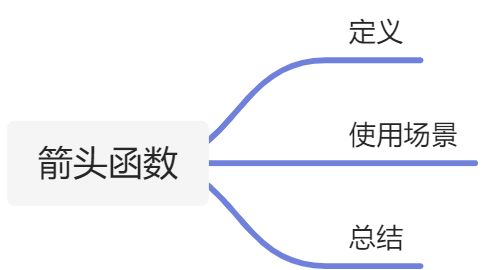箭头函数
作者:互联网

定义
箭头函数提供了一种更加简洁的函数书写方式。基本语法是:
参数 => 函数体
(参数) => {函数体}
- 基本语法:
//普通函数
var f = function(a){
return a;
}
f(1); //1
//箭头函数
var f = a => a
f(10); //10
当箭头函数没有参数或者有多个参数,要用 () 括起来。
var f = (a,b) => a+b;
f(6,2); //8
当箭头函数函数体有多行语句,用 {} 包裹起来,表示代码块,当只有一行语句,并且需要返回结果时,可以省略 {} , 结果会自动返回。
var f = (a,b) => {
let result = a+b;
return result;
}
f(6,2); // 8
当箭头函数要返回对象的时候,为了区分于代码块,要用 () 将对象包裹起来
var f = (id,name) => ({id: id, name: name});
f(6,2); // {id: 6, name: 2}
注意点:没有 this、super、arguments 和 new.target 绑定。
var a = () => {
// 箭头函数里面没有 this 对象,
// 此时的 this 是外层的 this 对象,即 Window
console.log(this);
}
a(11);
var b = () => {
console.log(arguments);
}
b(111); // ReferenceError: arguments is not defined
对象中使用箭头函数,this表示全局Window对象
var obj = {
name: "xx",
show: function() {
console.log(this); //this表示当前对象
},
say: () => {
console.log(this); //this表示全局window对象
}
}
箭头函数体中的 this 对象,是定义函数时的对象,而不是使用函数时的对象。
理解为:箭头函数中的this 指向的是 最近的父级的正常函数(不是箭头函数)里面的this 所指向的地方 找不到就是window
var obj2 = {
a: 10,
fn: function() {
console.log(this.a);
return {
a: 20,
fn: () => {
console.log(this.a);
return {
a: 30,
fn: function() {
console.log(this.a);
return {
a: 40,
fn: () => {
console.log(this.a);
}
}
}
}
}
}
}
}
var obj3 = { a: 88 }
obj2.fn().fn().fn().fn();
obj2.fn().fn.call(obj3); // 箭头函数的this是固定的 不可以通过call bind apply改变
注意:箭头函数不可以作为构造函数,也就是不能使用 new 命令,否则会报错
function Person() {
console.log(this);
}
new Person(); //Person {}
var People = ()=>{
console.log(this);
}
new People(); //TypeError: People is not a constructor
使用场景
- 箭头函数在参数中使用
var arr= [1,2,3];
arr = arr.map((a)=>a*a);
console.log(arr);
- 箭头函数可以与解构一起使用
//变量为目标,返回值为源
let cal = (a, b) => {
return {
add: a+b,
sub: a-b,
mul: a*b,
div: a/b
};
}
let {add, sub, mul, div} = cal(10, 5);
//形参为目标,实参为源
var show = ({one, two}) => {
console.log(one + "---" + two);
}
show({one: "hello", two: "你好"});
ES6 之前,JavaScript 的 this 对象一直很令人头大,回调函数,经常看到 var self = this 这样的代码,为了将外部 this 传递到回调函数中,那么有了箭头函数,就不需要这样做了,直接使用 this 就行。
所以,当我们需要维护一个 this 上下文的时候,就可以使用箭头函数。
总结
- 要有个箭头
- 箭头的前面是小括号,放形参,只有一个形参的时候可以省略小括号;
- 箭头的后面是函数体;
- 如果函数体只有一个语句,没有{},此时的返回值不需要return;
- 箭头函数里面的this总是指向最靠近的function 内部的this;
- 对象里面的方法,尽可能不要使用箭头函数;
- 箭头函数里面没有arguments,可以使用…reset,接收过来就是数组类型,接收的是形参之外的所有的实参;
var show = (a, b, ...reset) => {
console.log(a + b);
console.log(reset);
}
show(1, 2, 3, 4, 5);
标签:console,函数,箭头,var,fn,log 来源: https://www.cnblogs.com/Kongqingzhi/p/16625521.html